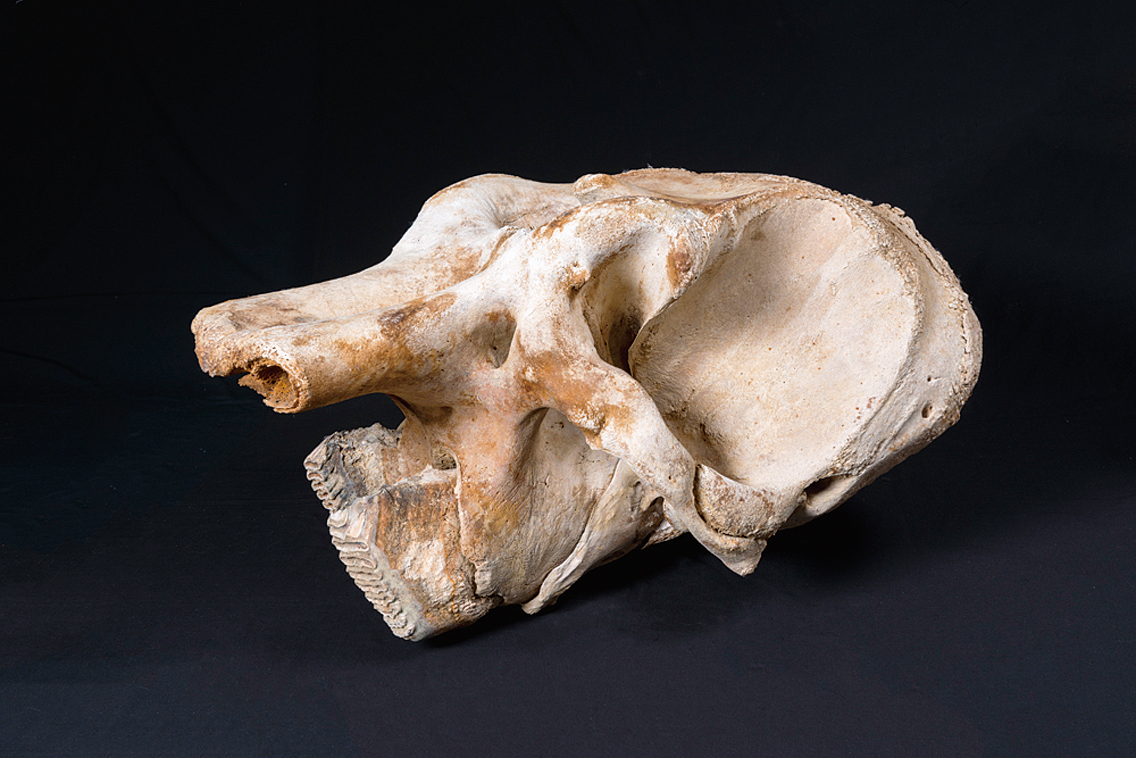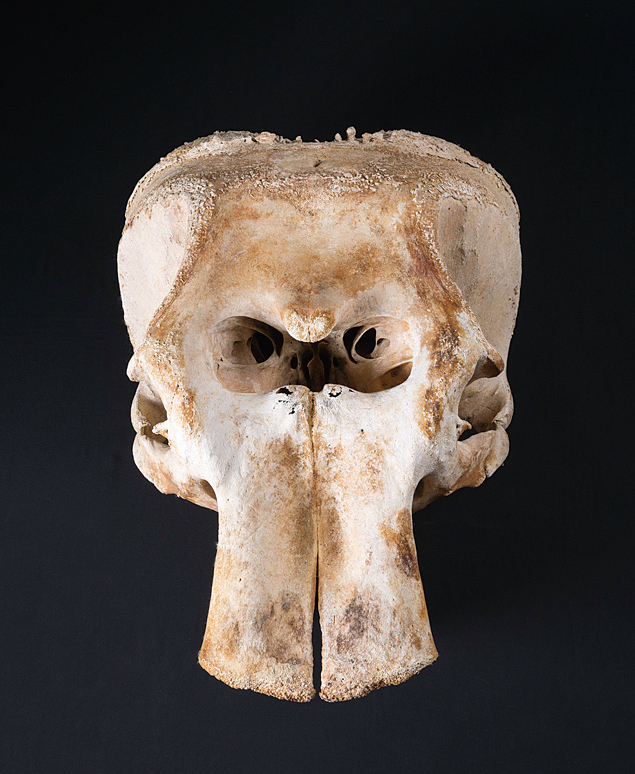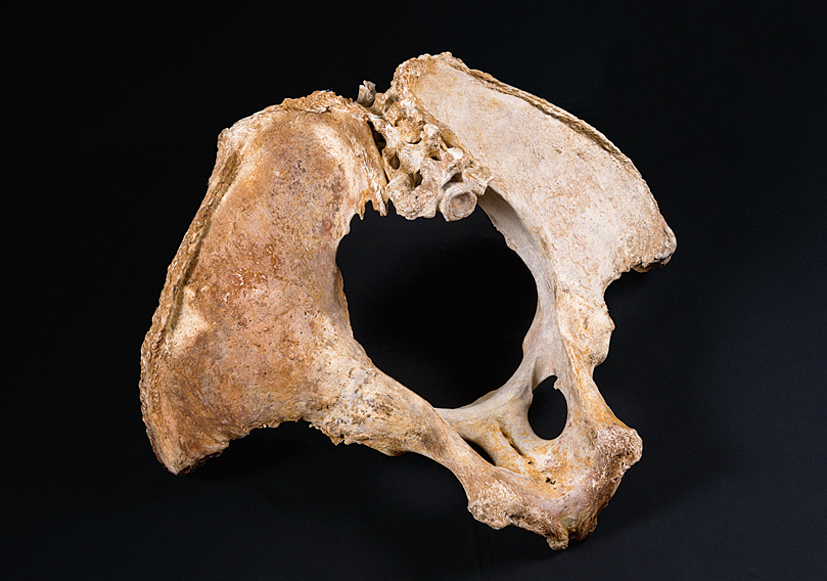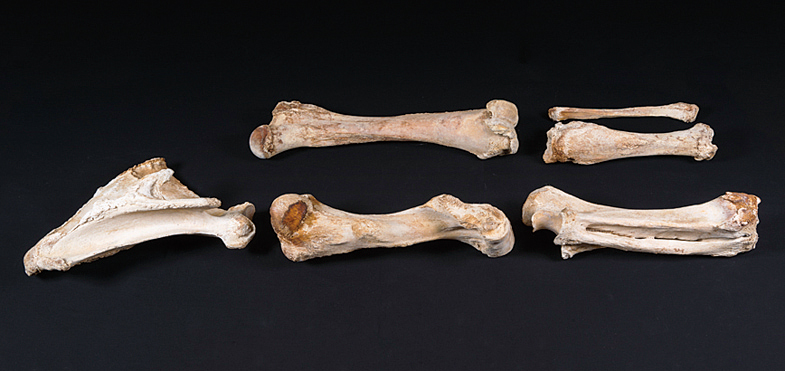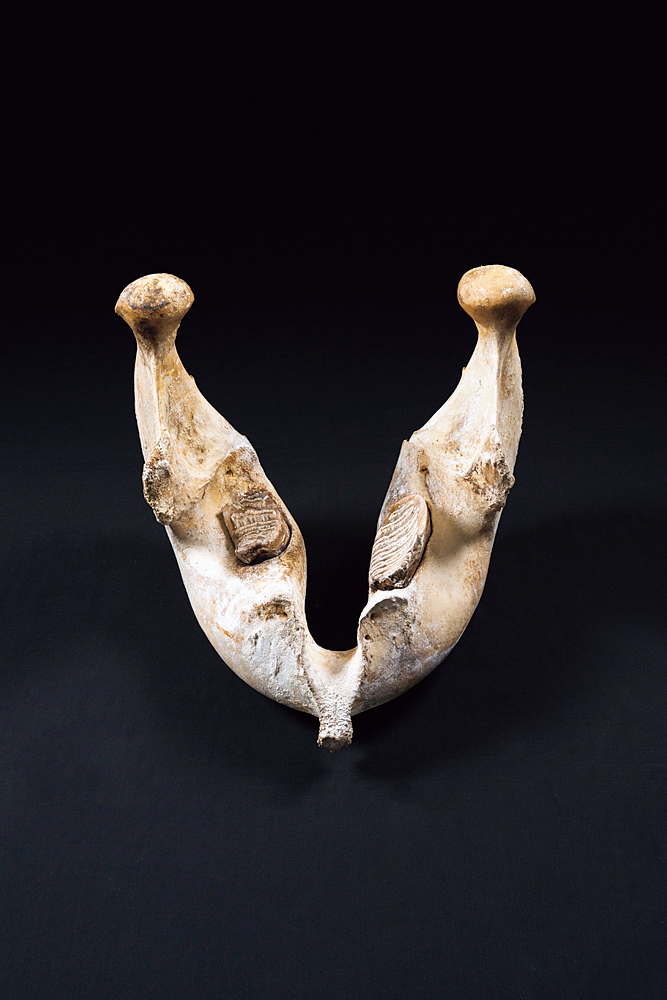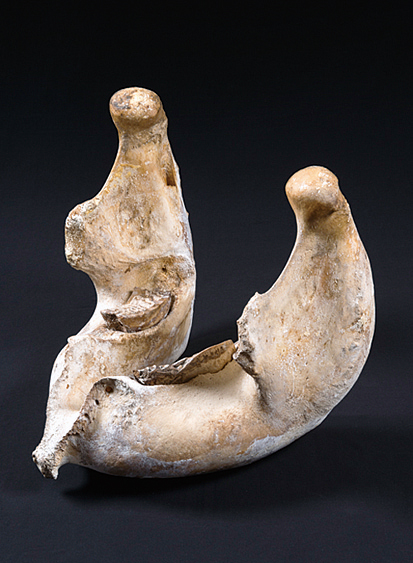E1
Skeleton of Asian elephants
Suwako and Haruko
In the University Museum of the University of Tokyo, four dead bodies of the Asian elephant (Elephas maximus) were donated during the past decade. Among them, the old elephants were Suwako from Kobe Oji Zoo and Haruko from Tennoji Zoo of Osaka City. Suwako is 65-year-old at the time of death. At that point, it was the oldest elephant in Japan. Haruko is the estimated to be 66-year-old. It was one of the oldest elephants in the world. Both of them have been loved for more than half a century in the zoo of Kansai Area. When they died, a lot of citizens regretted parting. Because the elephants lived long time, the three generations in many families enjoyed watching the same elephant.
The molars of both individuals have strange deformation and attrition as can be seen in the old-aged elephants. However, they were able to eat food using this molar by the deep care of staff of zoo, and the two elephants accomplished natural life span.
The body of the elephant is too large to morphologically examine. However, in the University Museum, we will continue the study of elephants, with great appreciation to the staffs who have maintained the large animals.
The data has been obtained about the internal structure of the skull and limb of the elephants stored in the University Museum. The characteristic structure to support the huge weight is being elucidated from the skeleton of the elephants. (Hideki Endo & Mayu Kusumi)

